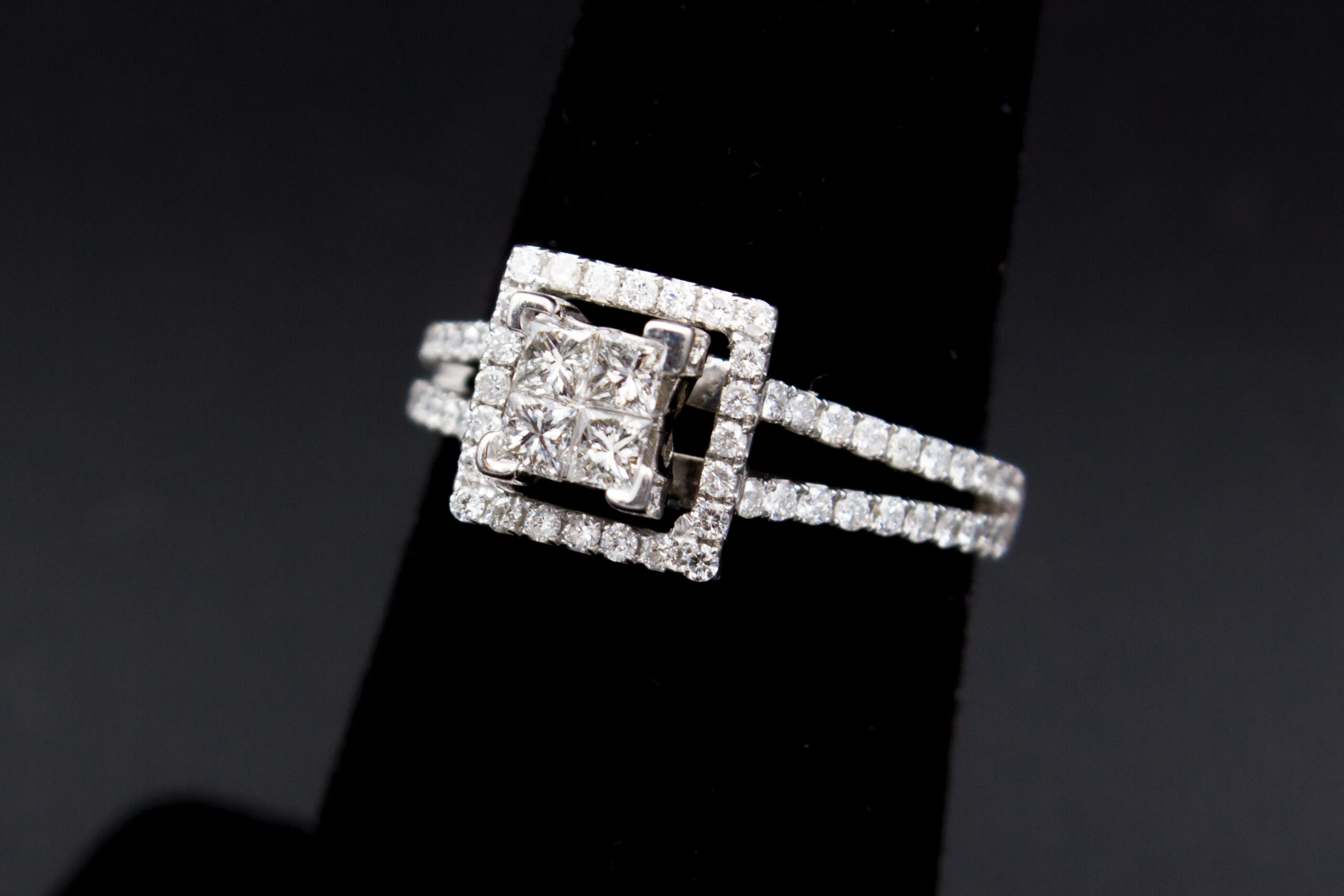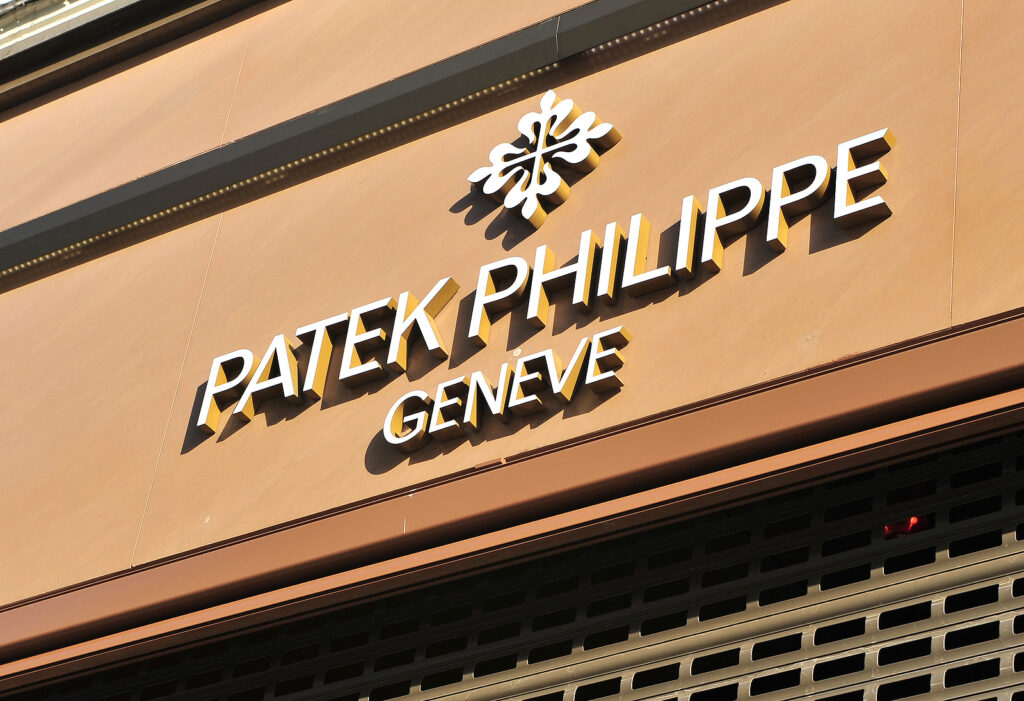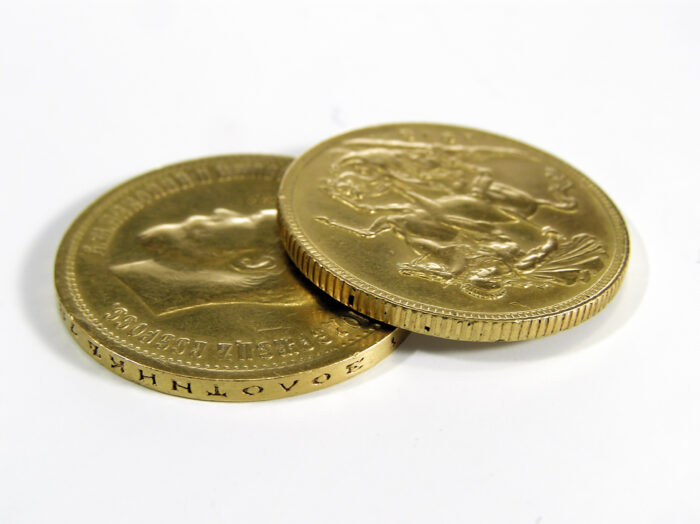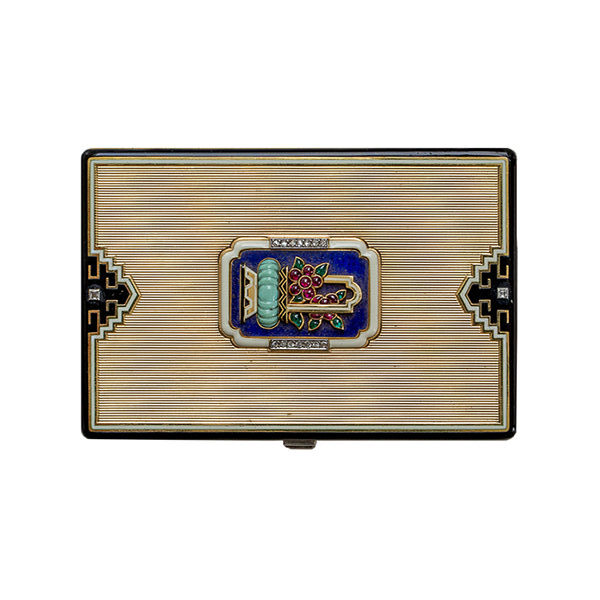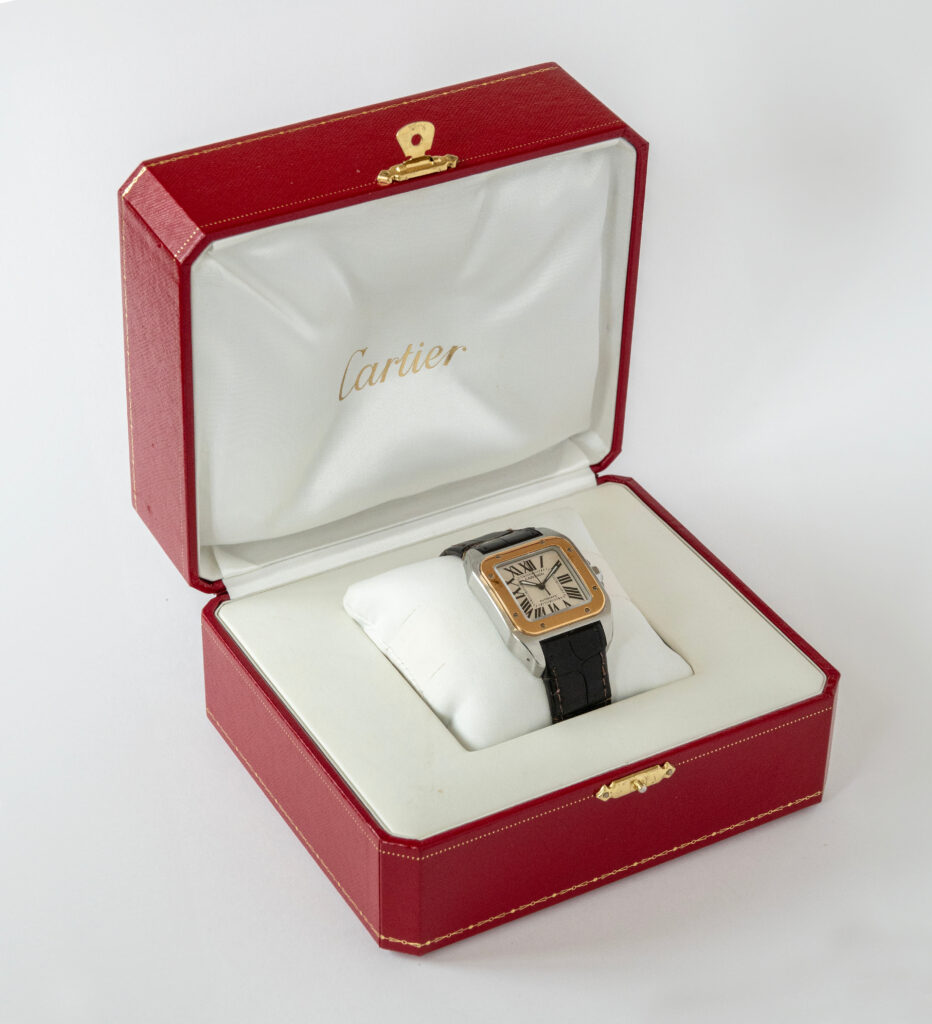Few styles capture the imagination quite like Art Deco, and jewellery fashioned for it embodies the spirit of an era defined by innovation, elegance, and bold self-expression. Whether from the period or modelled on it in the decades since, Art Deco jewellery captivates collectors and stylists alike. Many, especially those pieces from the era, remain among the most highly valued items the world over.
We’ve spent decades helping clients understand the true value of Art Deco pieces, whether they’re looking to build a collection or find the right time and place to sell. This guide is here to offer clarity, insight, and expert advice. Whether you’ve inherited a vintage piece and want to know its worth, are interested in buying a gold piece for investment, or simply want to appreciate the style that shaped a generation, this is your starting point.
Understanding the Art Deco Period (1920s–1930s)
The Art Deco era emerged during a time of dramatic cultural and societal transformation. Following the end of the First World War, the 1920s ushered in a new wave of optimism and modernity. It was a period shaped by jazz music, flapper fashion, skyscrapers reaching for the sky, and an exhilarating belief in progress. The world was changing fast and design followed suit.
Art Deco, as a movement, was first showcased at the Exposition Internationale des Arts Décoratifs et Industriels Modernes in Paris in 1925. It quickly spread across Europe and America, influencing everything from architecture and interior design to cars, fashion, and, most notably, jewellery. This style embraced modern materials, bold shapes, and a sense of streamlined luxury that stood in contrast to the softer, flowing lines of the Art Nouveau period that came before.
Jewellery and the Art Deco Style
In many ways, Art Deco was a visual celebration of the machine age. Designers began to favour geometric precision, symmetry, and clean lines, drawing inspiration from ancient Egyptian, Aztec, and East Asian motifs, as well as the sleekness of modern industry. Jewellery design mirrored this shift, with sharp, angular forms and striking colour combinations becoming the hallmark of the era.
This was also a time of economic boom and social liberation, particularly for women. As the flapper generation broke with convention, shorter hairstyles, looser clothing, and bolder jewellery all became part of a new expression of independence. Long, dramatic necklaces, striking cocktail rings, and elegant brooches adorned with diamonds and coloured gemstones became the accessories of choice.
Signature Features of Art Deco Jewellery
Design Characteristics
At the heart of Art Deco design is a love of geometry and symmetry. Unlike the flowing, naturalistic curves of the Art Nouveau movement that came before it, Art Deco embraced clean lines, strong angles, and a sense of streamlined elegance. Pieces often display a balance between form and function, making them not only beautiful but timeless in their construction.
Designs from this era frequently incorporated abstract shapes and repeated patterns, giving them a graphic, architectural quality. It was a style that aligned with the values of progress, technology, and modernity, celebrating the new age with clarity and confidence.
Popular Motifs
Art Deco jewellers drew inspiration from a wide range of cultural and historical sources, resulting in an exciting mix of motifs. Some of the most iconic include:
- Sunbursts: These symbolise energy and radiance, often used in brooches and pendants.
- Zigzags and Chevrons: Dynamic and angular, these patterns created visual movement and depth.
- Egyptian Revival: Following the discovery of Tutankhamun’s tomb in 1922, Egyptian-inspired motifs such as scarabs, lotus flowers, and hieroglyphics became highly fashionable.
- Stylised Florals: These are not soft or romantic, but reimagined in geometric form to suit the era’s aesthetic.
- Architectural Shapes: The jewellery was often influenced by skyscrapers, bridges, and Art Deco buildings, which is particularly visible in statement rings and pendant designs.
Typical Art Deco Jewellery Items
The era produced a wide variety of pieces, many of which remain popular with collectors and antique and vintage jewellery enthusiasts today:
- Brooches: These were often large and elaborately set with contrasting gemstones and bold patterns.
- Cocktail Rings: These were eye-catching and expressive, typically featuring central stones surrounded by intricate geometric settings.
- Long Necklaces: Frequently strung with pearls or beads, Art Deco necklaces were designed to move fluidly with the body and complement flapper-style fashion.
- Bracelets and Bangles: Often wide and rigid, bracelets and bangles of the era were crafted in platinum or white gold, sometimes featuring panels of onyx, jade, or coral.
- Earrings: Drop earrings were popular, styled with linear forms and bright gem combinations were designed to enhance the silhouette and sparkle in low lighting, perfect for an evening out in the Jazz Age.
Typical Materials in Art Deco Pieces
Sleek and Sophisticated Metals
Art Deco ushered in a preference for cool-toned metals, moving away from the warmer golds of earlier periods. The most commonly used metals included:
- Platinum: A favourite of the era, platinum offered both strength and a subtle silvery sheen, perfect for holding intricate settings and showcasing the brilliance of diamonds.
- White Gold: Introduced as a more affordable alternative to platinum, white gold was similarly valued for its clean, modern aesthetic.
- Silver: While less commonly used in high-end pieces, silver occasionally featured in more accessible designs and remains a marker of the period’s broader influence.
Bold, Brilliant, and Balanced Gemstones
Colour played a vital role in Art Deco jewellery, with designers frequently pairing vivid gemstones to create high-contrast, eye-catching combinations. Common choices included:
- Diamonds: Often used as the centrepiece or accent stones, diamonds were prized for their brilliance and clarity.
- Onyx: Deep black onyx provided dramatic contrast against white metals and diamonds, commonly seen in geometric rings and pendants.
- Emeralds, Sapphires, and Rubies: These rich, primary-coloured stones were used to add depth and intensity to statement pieces.
- Coral and Jade: Popular in Asian and Egyptian-inspired designs, offering warm reds and soothing greens that add exotic flair.
- Marcasite: With its metallic sparkle, marcasite was a popular alternative to diamonds in more affordable Art Deco designs.
Other Distinctive Materials
Art Deco jewellers weren’t afraid to experiment. Many incorporated non-traditional materials to add texture, transparency, or reflective qualities:
- Enamel: Used to add colour and pattern, enamel was often used for outlining geometric shapes or filling decorative motifs with bold hues.
- Mother-of-Pearl: The soft iridescence of mother-of-pearl provided a striking contrast to harder gemstones and metals.
- Rock Crystal: This was frequently used in carved or faceted forms to enhance Art Deco’s clean lines and architectural feel.
Famous Names in Art Deco Jewellery
Certain designers and houses not only helped define the style of the Art Deco period but continue to command respect and admiration from collectors and connoisseurs today.
Jewellery bearing the signature of one of these famed houses or designers significantly enhances an item’s value. Provenance, craftsmanship, and brand legacy play a critical role in how collectors assess pieces and items by Cartier, Van Cleef & Arpels, Tiffany, and others regularly command premium prices on the international market.
Cartier
Few names are as synonymous with Art Deco elegance as Cartier. During the 1920s and 1930s, the house embraced the full spectrum of Art Deco design, from stark geometry to exotic influences. Their Egyptian Revival pieces became icons of the movement and their diamond-set bracelets, brooches, and sautoirs, often crafted in platinum and accented with onyx or jade, remain some of the most coveted examples of Art Deco jewellery in the world.
Van Cleef & Arpels
Renowned for their exquisite craftsmanship, Van Cleef & Arpels embraced Art Deco design with a level of intricacy and refinement that continues to attract collectors. Their innovative settings, such as the invisible setting technique introduced in the 1930s, allowed gemstones to shine without visible metal, creating a seamless, fluid look. The house became known for pairing diamonds with coloured stones like sapphires, rubies, and emeralds, arranged in beautifully balanced, symmetrical compositions.
Tiffany & Co.
The American powerhouse Tiffany & Co. blended classic Art Deco motifs with a timeless sensibility. From diamond bracelets to gemstone rings, Tiffany’s designs of the era were clean, sophisticated, and often incorporated materials like jade, enamel, and rock crystal. Their pieces from the 1920s and 1930s are widely sought after by both investors and collectors for their enduring craftsmanship and transatlantic appeal.
Raymond Templier
Known as one of the most avant-garde designers of the Art Deco era, Raymond Templier took modernism to its purest form. His jewellery often featured bold shapes, stark contrasts, and minimal ornamentation, reflecting the true architectural spirit of the movement. Templier’s designs are especially admired by those with a taste for the more abstract, cutting-edge side of Art Deco design.
Art Deco Era or Art Deco-Inspired? Identifying Authentic Pieces
For collectors and sellers, distinguishing genuine period pieces from modern reproductions is essential. While contemporary Art Deco-style jewellery can be beautiful, it doesn’t carry the same historical or investment value as authentic pieces made during the 1920s and 1930s.
So how can you tell the difference? Here are a few key indicators to look for:
Hallmarks and Maker’s Marks
Authentic Art Deco jewellery often includes hallmarks or maker’s marks stamped discreetly on the metal. These can indicate:
- The year or period of manufacture.
- The metal content (e.g. platinum, 18ct gold).
- The workshop or designer behind the piece.
Recognising these marks requires some expertise, as each country has its own system and some marks may have worn with age. However, their presence is a strong sign of authenticity.
Craftsmanship and Materials
Genuine Art Deco pieces were crafted to exceptional standards, often by hand. Look for:
- Clean, sharp detailing in geometric designs.
- Fine gemstone settings with tiny millegrain or filigree accents.
- Use of platinum, white gold, and natural gemstones, rather than modern alloys or synthetics.
Mass-produced reproductions may lack the precision, weight, or subtle artistry that define true period jewellery.
Provenance and Documentation
If the item comes with any original receipts, boxes, or paperwork, this can be incredibly helpful in establishing authenticity. Family stories or records about where the piece came from, especially if it was passed down through generations, can also support its provenance.
Wear and Patina Consistent with Age
Genuine antique jewellery will usually show some signs of time, such as small scratches, softening of high points, or a natural patina on the metal. These subtle signs aren’t flaws; they’re part of the story. In fact, they often add charm and character and can help differentiate a period piece from a brand-new replica.
Seeking Assistance When You’re Unsure
If you’ve inherited or acquired a piece that you think may be Art Deco, but aren’t quite certain of its age or value, the best next step is to seek a professional valuation. At Burlingtons Ltd., our specialist personally examines each piece during a home visit, taking all the above factors into account to provide an accurate and honest assessment.
Whether you’re looking to sell or simply want to know more about what you own, we’re here to offer expert guidance – at no pressure and no obligation.
Art Deco Jewellery as an Investment
Art Deco jewellery has proven to be a consistently strong investment. With its bold design, rich history, and growing rarity, it remains highly sought-after by collectors and connoisseurs alike.
Several factors contribute to the continued strength of the Art Deco market:
- Scarcity: Authentic Art Deco pieces are increasingly rare. Many have been lost, broken up, or re-set over the years. This natural scarcity drives competition among collectors and dealers.
- Timeless Design: The bold, geometric style of Art Deco remains fashionable today, making these pieces attractive to both vintage jewellery enthusiasts and modern buyers alike.
- Historic Significance: Owning a piece of Art Deco jewellery is like holding a piece of history. These items reflect a remarkable era of change, elegance, and innovation, which adds intrinsic value beyond the materials alone.
The most valuable pieces also tend to share a few key traits:
- Designer or Brand: Signed pieces by famous houses can command a significant premium due to their provenance and craftsmanship.
- Rarity: Unique or limited-edition items, particularly those featuring rare gemstones or unusual design elements, are highly desirable to serious collectors.
- Condition: Items that have been well cared for – with original settings, intact stones, and minimal restoration – typically achieve higher valuations.
- Documentation: Pieces with original paperwork, maker’s marks, or a clear provenance often fetch more on the market.
Why Sell Your Art Deco Jewellery to Burlingtons Ltd.?
Selling a treasured piece of Art Deco jewellery is often about more than parting with a beautiful object. It can involve memories, sentiments, or the legacy of a loved one. At Burlingtons Ltd., we understand the emotional weight that can accompany these decisions, and we approach every valuation with sensitivity, discretion, and respect.
Daniel Ives, founder of Burlingtons Ltd. and a third-generation dealer, offers a truly personal experience. Rather than asking clients to send valuable items away or navigate impersonal processes, Daniel arranges private home visits at a time that suits you. This face-to-face service allows you to discuss your jewellery in comfort, ask questions, and receive expert insight on your piece’s history and market potential, all without obligation.
How We Handle Fees
Because we are not an auction house, there are no seller’s fees, delays, or uncertainties. If you choose to sell, we can make an immediate, competitive offer and ensure prompt payment. Our extensive network of collectors across the UK and beyond allows us to match items with the right buyers, often achieving prices that would be difficult to secure elsewhere.
With decades of experience and a commitment to honesty and care, we offer a selling experience that is as seamless as it is rewarding.
How to Sell to Burlingtons Ltd.: A Simple, Supportive Process
- Get in Touch: Contact us by phone, email, or through our website to let us know about the item you’d like to sell.
- Share Item Details: Send us a brief description and a few clear images for a preliminary assessment.
- Book a Home Visit: If your item is suitable, Daniel Ives will arrange a personal visit wherever you live in the UK, at a time that suits you.
- Receive an Offer: During the visit, Daniel will examine the piece and provide an instant, no-obligation offer.
- Get Paid Immediately: If you choose to accept the offer, payment is made on the spot.
Book a Valuation for Art Deco Jewellery Today
If you’re considering parting with your jewellery, it’s natural to want it to go to someone who understands and values its significance. Our goal is to ensure that every piece we handle is treated with the care it deserves and placed with someone who will truly appreciate it. This is true whether the piece is an antique from 1920 or a vintage, luxury piece in the Art Deco style from a later period.
Whether you’re ready to sell or simply want to know more about what your Art Deco jewellery might be worth, we’re here to help. Contact us today for a personal, pressure-free conversation and take the first step towards a confident, rewarding decision.
